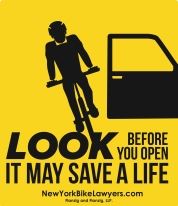Bike-Share Effort Draws Riders and Hits Snags
Published: June 11, 2013
After two weeks, more than 170,000 trips have been taken. Annual memberships have exceeded 36,000. No serious injuries have been reported.
But the Bloomberg administration has refused to quantify, or even elaborate on, the rash of problems plaguing its system, which has had technical errors of a magnitude never experienced by bike-share programs in other major American cities.
Many docking stations have proved temperamental, refusing to accept bikes or process credit card information. Others have at times shut down altogether. On some occasions, passers-by have been able to pull a bike from a station without paying, probably because the last user was unable to lock it back in place. Some riders have grown weary of testing individual bike docks in search of one that works, pedaling off to another station before the system eventually allowed them to end their trip.
And when these riders have called to complain, they have been put on hold for 45 minutes or more.
In a city where first impressions can quickly harden into lasting judgments, the setbacks threaten to sully what has been billed as a legacy-making transportation policy of Mayor Michael R. Bloomberg — leaving even the scheme’s most vocal proponents alarmed by how the program’s software seems ill prepared to handle public demand.
“I think it’s the best thing that’s happened to the city in a long time,” said Abe Stanway, 23, a data engineer from Fort Greene, Brooklyn. “But it hasn’t proven itself to be reliable if I really need to be on time.”
After his latest problem with faulty docks in the Dumbo section of Brooklyn on Monday, Mr. Stanway said he decided to commute by private bike again for the foreseeable future.
The city’s Transportation Department has sought to minimize these issues, referring to them as inevitable kinks. Compared with the number of trips taken each day, the city said that incidents were infrequent and appeared to be diminishing, though officials would not provide a more detailed estimate of breakdowns in the system. Seth Solomonow, a spokesman for the department, suggested last week that riders’ own inexperience with the system was contributing to their troubles.
But a survey of programs in other cities makes clear that New York’s problems lie with its system, not its users. Officials in Washington and Boston said that even in their programs’ infancies, they never had station failures like New York’s or widespread difficulties with docking.
Those cities also use New York’s chosen operator, Alta Bicycle Share, based in Oregon, but have software from a company called 8D Technologies. Alta’s partner based in Montreal, Public Bike System Company, has since severed ties with 8D, and chose to develop its own software before the introduction of the New York system.
New York’s program was expected to begin last summer, but faced delays because, as Mayor Bloomberg put it last August, “the software doesn’t work.” (Flooding from Hurricane Sandy postponed the program further, amid damage to equipment stored at the Brooklyn Navy Yard during the storm.)
In January, records show, Alta filed a lawsuit in an Oregon circuit court against Public Bike System Company, saying it delivered “nonconforming goods and faulty goods” to New York’s bike-share program. Alta said this week that the suit was never served and that the groups remained partners.
The other city using the new software is Chattanooga, Tenn., where a bike program began last summer. Philip Pugliese, the bicycle coordinator there, said in an interview that the city had experienced a spate of docking problems. But with only 300 bikes and about 30 stations, Mr. Pugliese said, “we could manage any customer service issues at the local level.”
In New York, with 6,000 bikes at more than 300 stations, gaps in the system have proved more difficult to patch. Stations are both solar- and battery-powered, with the strength of their charges dependent on factors like weather and use rates for bikes, as well as the adjoining touch-screen device. Accordingly, a beautiful day is both a blessing and a curse: The sun can help sustain a station, but ideal riding conditions beget heavy use, which can drain batteries.
As riders have sought to report problems since the opening, a customer service phone line has repeatedly failed. Station information provided by an app has often been unreliable, riders said, and many annual subscribers have still not received their membership keys.
Mr. Solomonowsaid the program had been rescinding overage charges when riders were unable to dock a bike, though it was not clear how the system could distinguish between riders who struggled to return bikes and those who simply rode for too long.
Officials also said this week that the customer service center’s capacity had been doubled, but even this bit of progress was met with some skepticism.
“Focus more on fixing your software and equipment malfunctions,” one man wrote on the Citi Bike Facebook page on Monday, “and then you will have far fewer calls and e-mails to customer service.”
Since the program began, on Memorial Day, the Facebook page has been host to several squabbles, dividing program loyalists preaching patience from others whose displeasure with the problems has already reached a boiling point.
“To all who are kvetching about the kvetching: Citi Bike was clearly unprepared, and it’s taken them way too long to acknowledge it,” one man wrote on the system’s Facebook page. “I am proud to be an early adopter/beta tester,” another said. “Hiccup city.”
Janette Sadik-Khan, the city’s transportation commissioner, said that “every new bike-share system has had an adjustment period,” adding that the scale of New York’s program “is like nowhere else.”
Yet for a program built on the notion of self-reliant travel and predictable commute times, the daily uncertainty of the docking system has undercut part of cycling’s very appeal.
“We feel in control,” Charles Komanoff, a transportation economist and longtime cycling advocate, said of bike commuting. “If you don’t have that with bike share, then it’s never going to fulfill its true potential.”
And yet, amid the chorus of complaints about station locations and reckless cycling habits, the city is teeming with those who hope the program does.
On Sunday, Erin Stabile, 23, walked more than a mile from the Upper East Side to a rack near 58th Street and Second Avenue, disinclined to spend any part of a picturesque day inside a darkened subway tunnel.
When she arrived, she said, the station was out of service. She walked west to another hub, where she was able to check out a bike, and rode to a station near the Barclays Center in Brooklyn, which would not allow her to return it. She found a working station a few blocks away, at Ashland Place and Hanson Place, and later rode back from there to the station at East 58th Street, which again refused to cooperate. “I’m an idiot,” Ms. Stabile said, walking toward a working kiosk on Third Avenue.
Though it would have been nice if the station were fixed, she explained, she should have known better.


